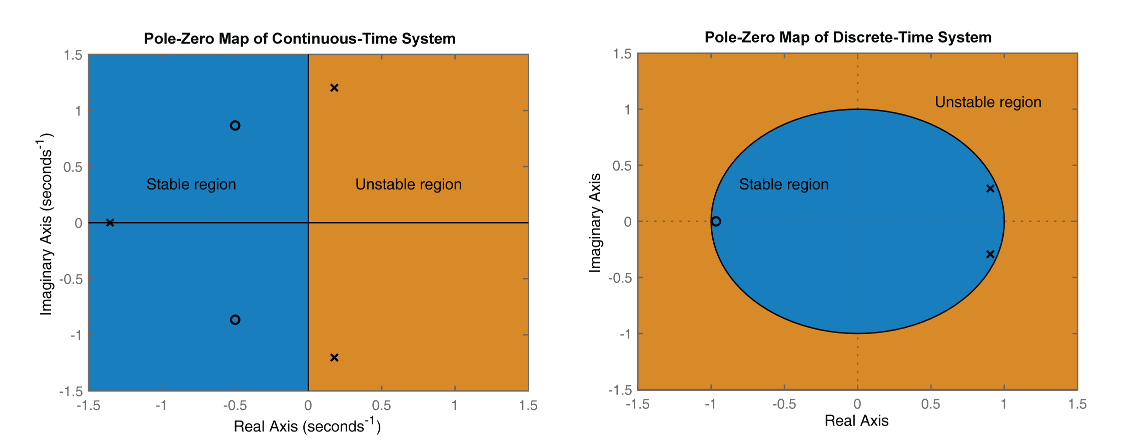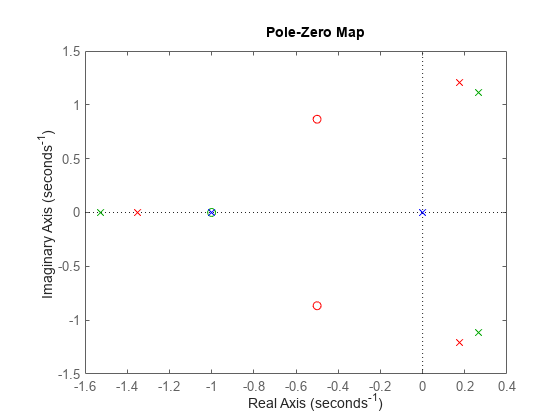pzplot
Plot pole-zero map of dynamic system
Description
The pzplot function plots the pole-zero map of a dynamic system model and returns a
PZPlot chart object. To customize the plot, modify the properties of the
chart object using dot notation. For more information, see Customize Linear Analysis Plots at Command Line (Control System Toolbox).
The figure shows pole-zero maps for a continuous-time (left) and discrete-time (right)
linear time-variant model. The maps use x and o
represent poles and zeros, respectively.
In continuous-time systems, all the poles on the complex s-plane must be in the left-half plane (blue region) to ensure stability. The system is marginally stable if distinct poles lie on the imaginary axis, that is, the real parts of the poles are zero.
In discrete-time systems, all the poles in the complex z-plane must lie inside the unit circle (blue region). The system is marginally stable if it has one or more poles lying on the unit circle.

To obtain pole and zero locations, use the pzmap function.
Creation
Syntax
Description
pzp = pzplot(sys)sys and returns the corresponding chart object. In the plot,
x and o represent poles and zeros,
respectively.
pzp = pzplot(___,plotoptions)plotoptions. Settings you specify in
plotoptions override the plotting preferences for the current
MATLAB® session. You can use plotoptions with any of the
input argument combinations in previous syntaxes.
pzp = pzplot(parent,___)Figure or TiledChartLayout, and sets the
Parent property. Use this syntax when you want to create a plot
in a specified open figure or when creating apps in App Designer.
Input Arguments
Properties
Object Functions
addResponse | Add dynamic system response to existing response plot |
Examples
More About
Tips
Plots created using
pzplotdo not support multiline titles or labels specified as string arrays or cell arrays of character vectors. To specify multiline titles and labels, use a single string with anewlinecharacter.impulseplot(sys) title("first line" + newline + "second line");
Version History
Introduced before R2006aSee Also
Topics
- Customize Linear Analysis Plots at Command Line (Control System Toolbox)



